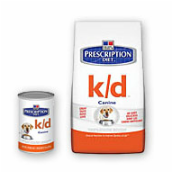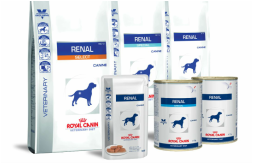Treatment and Palliative Care of Boxer JKD
The prognosis for dogs with Boxer JKD depends upon the degree of kidney dysfunction, age of onset of symptoms, the severity of the kidney abnormality at the time of diagnosis and the effectiveness of veterinary management. Underdeveloped and dysfunctional kidneys almost always result in chronic renal failure and death. In most cases, the long-term outlook for survival is poor. However, if only one kidney is affected (unilateral) affected dogs may live a normal, full life.
Unfortunately there is no cure for Boxer JKD and only supportive care can be offered to affected dogs as their renal failure worsens. While all dogs go through the same process of symptoms, there are some slight differences between individuals as to the rate of decline owing to a different rate of kidney dysfunction between individual dogs. A decision to perform euthanasia on the dog is often made before the dog suffers any further.
Unfortunately there is no cure for Boxer JKD and only supportive care can be offered to affected dogs as their renal failure worsens. While all dogs go through the same process of symptoms, there are some slight differences between individuals as to the rate of decline owing to a different rate of kidney dysfunction between individual dogs. A decision to perform euthanasia on the dog is often made before the dog suffers any further.
All treatments for chronic kidney disease (CKD) need to be tailored to the individual patient. Continual monitoring of these patients is ideal and the treatment plan should be adapted according to the response to treatments. Boxer JKD is an inherited kidney disease that differs from other caused or age-related kidney failures but the treatments and palliative care of all are generally the same.
1. The mainstay of treatment in the early stages is diet. Several different diets are now available. The original ones, Hills and Royal Canine may be favoured as these companies did the research to show the diets work but ultimately you need to select a diet that your dog finds most palatable. Palatability is an inherent problem for many dogs because of the reduced phosphate levels (and consequently less protein) they contain. In general the dry formulations seem to be better accepted than the wet/canned varieties, but this may vary with individual dogs. Care is needed on selection of diets as there is limited regulation of diets in Europe. They may not be all they claim to be.
1. The mainstay of treatment in the early stages is diet. Several different diets are now available. The original ones, Hills and Royal Canine may be favoured as these companies did the research to show the diets work but ultimately you need to select a diet that your dog finds most palatable. Palatability is an inherent problem for many dogs because of the reduced phosphate levels (and consequently less protein) they contain. In general the dry formulations seem to be better accepted than the wet/canned varieties, but this may vary with individual dogs. Care is needed on selection of diets as there is limited regulation of diets in Europe. They may not be all they claim to be.
2. If your vet finds phosphate levels remains high after 4-6 weeks on a renal diet then they may advocate phosphate-binders be added (e.g. aluminium hydroxide or calcium carbonate). The aim is to keep the phosphate levels in the lower half of the reference range.
3. An ACE-inhibitor (such as enalapril or benzazepril or many others) is indicated if the dog is proteinuric (high protein) but only if the disease is not too advanced when the dog may not be able to tolerate this type of treatment. The idea is to reduce the pressure in the blood vessels within the kidney itself, thereby reducing the protein leakage. If the systemic blood pressure is high then additional medications are sometimes given on top of the ACE-inhibitor.
4. There should be monitoring for uterine tract infections (UTIs) with treatment if found. Quite a lot of bitches with Boxer JKD seem to have UTIs. Treating these can make the dog feel much better.
5. Dogs that become severely dehydrated can decompensate very suddenly and go into what is called a uremic crisis. These animals need to be hospitalized immediately and rehydrated with intravenous fluids and balanced electrolyte solutions, to restore hydration and correct acid-base imbalances.
Useful websites
IRIS information for owners
www.vetmed.wsu.edu/ClientED/ckd.aspx
http://www.iris-kidney.com/
Download a treatment booklet
Download a treatment summary guide
|
|









